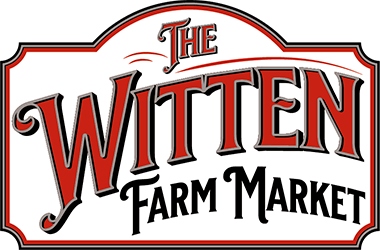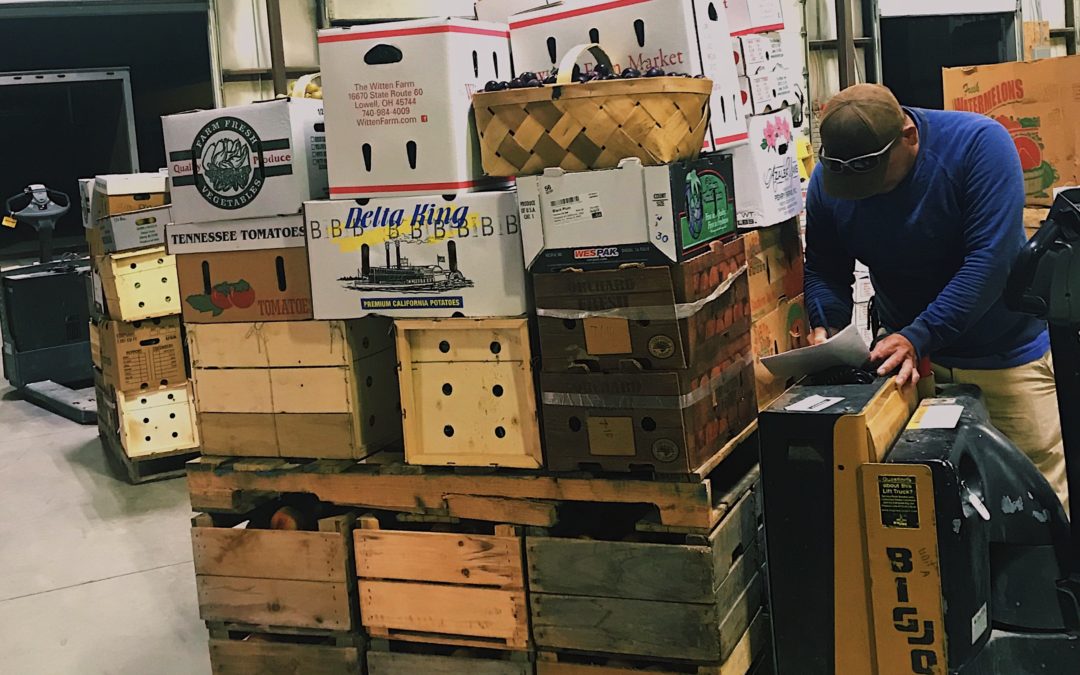It all started at 5:30 p.m. the night before. It was time for me to take inventory for the night. See, every day here at Witten’s, we make a detailed list of everything we have on our wagons. We take note of the displays on the top of the wagon and what’s in stock underneath it. Basically, inventory is a pretty big deal. Everything has to be accurate so we know exactly what to send for the next morning. The whole process was always like magic to me. “You’re telling me that I just make this list and we get all new produce for the next day that NEVER runs out?” I would always think. It’s a huge feat, but it’s entirely true.
I was lucky enough to witness the magic for myself. I met Julie Witten (co-owner of Witten Farm) at the farm bright and early. And by bright and early, I mean 3am. Yes, that is the same time the corn is picked in our fields! It was Labor Day weekend, so everyone would be buying their corn for the last big cookout day of the year.
Julie pulled up the inventory sheet that we filled out the night before and immediately went to work. I watched keenly as she began filling out the produce we needed for today at each market. At this hour, I could barely process the fact that it was 3 am, so the fact that Julie and our team does this every single morning during the season amazes me. “So, how do we know exactly what to send?” I asked. Julie told me, “It is a mix between yesterday’s numbers and last year’s sales that determine what we send for today.” This made sense-a random Tuesday in August would not be as busy as the Fourth of July, for example.
“Everything’s a balancing act”, says Julie. “We have to ensure busier markets get the right amount of products.” Pallets are almost like snowflakes in that way-no two are exactly the same. Gahanna Market’s pallet was taller than me, while the pallet that is delivered to our market in Lowell is about half my height. What I began to learn after talking with Julie and witnessing the process for myself was inventory is a skill. It is no easy task to know each market’s needs well enough to send just the right amount of product-but at Witten’s, even the tallest orders can be accomplished (literally in this case).
Then, it was time for the packing. Watching everyone pack the pallets made one thing clear: Pallet loading is an art form. Julie explained, “The heaviest items go on the bottom, and the lightest items go on the top. Everything has to be packed perfectly so everything fits on the truck”. Once the pallets were loaded, they were wrapped tight with plastic wrap and onto the trucks they went to be delivered to each of our twenty-two locations. All this was done before five-thirty in the morning.
The most astonishing thing? The efficiency of the process. We always have enough fresh fruit and vegetables for the day, and we never run out. Julie depends on the markets to give the correct stock. The crew depends on Julie to write what needs loaded on the pallets. The markets depend on our crew to deliver the produce, and our customers depend on us to have the fresh produce in for the day. This cycle continues every day. I asked Julie how she streamlined the process. She laughed, telling me that they used to have the managers call everyday with the inventory. Now, we enter it on a drive in Google. This process, the one that I originally thought was magic, has a few secret ingredients. Those ingredients? Hard work and teamwork-which are the closest things we have to magic in my opinion.
When I went to work the next day, I opened up the document and started on the inventory. I looked at it with a new perspective, and tried to be even more accurate than usual, knowing that my market, and the customers who shop there depend on us to get fresh food for the next day, and the day after that. Just like magic. Or should I say-teamwork?

